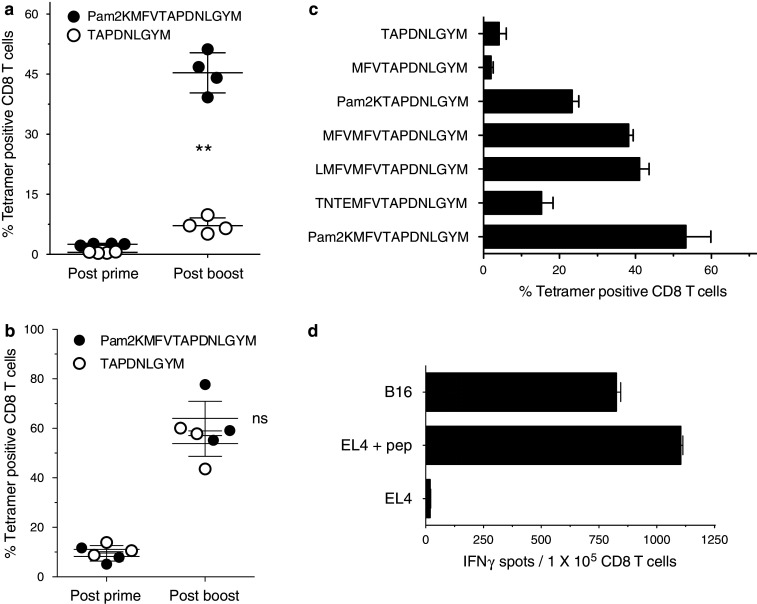Fig. 3.

Increasing peptide amphiphilicity enhances immunogenicity of BiVax. B6 mice were vaccinated i.v. on days 0 and 12 with BiVax composed of 150 μg of peptide and 50 μg of poly-IC. a Mice (4 per group) received identical BiVax immunizations (prime/boost) with either minimal peptide (TAPDNLGYM) or palmitilated peptide (Pam2KMFVTAPDNLGYM). Immune responses were measured in blood 7 days after the boost. **Statistical significance (P < .001) between the 2 peptides was observed after the boost. b Mice (3 per group) were primed with palmitilated peptide and boosted with either the palmitilated peptide or the minimal peptide. On day 7 and 19, antigen-specific CD8 T cells were evaluated in blood by tetramer analysis. ns = no statistical significant difference was observed between the 2 peptides after the boost. c Mice (3 per group) received two identical BiVax immunizations (prime-boost) with indicated peptides as described above. 7 days after the boost the antigen-specific CD8 T cells in blood were evaluated by tetramer analysis. Results represent the average percentage of tetramer positive CD8 T cells from 3 mice per group with SD (bars) of the means. d Purified spleen CD8 T cells from the experiment presented in panel (a) from the mice vaccinated with palmitilated peptide were evaluated for their ability to recognize tumor cells using an IFN-γ secretion EliSpot assay. APCs used: Trp1455–463-pulsed EL4 (EL4 + pep), B16F10 melanoma, and un-pulsed EL4 cells (negative control). Results represent the average number of spots from triplicate wells with SD (bars) of the means
